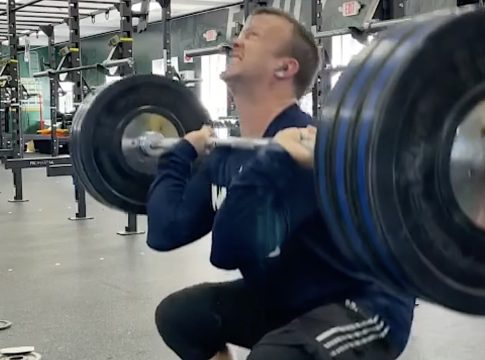Mastering Your One-Rep Max: A Guide for Serious Lifters
For seasoned athletes in Olympic weightlifting, determining your one-rep max (1RM)—the absolute maximum weight you can lift in a single effort—shouldn’t be a frequent endeavor. In fact, advanced lifters are advised to conduct 1RM tests just a few times a year.
Understanding the Lifts
To excel in Olympic weightlifting, one must master two fundamental lifts: the snatch and the clean & jerk. Each lift demands not just raw power but also impeccable technique. Your 1RM is a crucial benchmark indicating your potential strength in these explosive movements.
Maxing Out vs. Lifting Heavy
It’s important to distinguish between "maxing out" and simply "lifting heavy." The former refers to testing your true 1RM, while the latter can involve multiple sets at sub-maximal weights.
-
Maxing Out: This is pushing your limits in a single lift. It requires activation of various muscle fibers and is taxing on your body and nervous system.
- Lifting Heavy: This can involve sets of lower reps, improving strength without the same level of fatigue that comes from maxing out.
Understanding these differences helps prevent overtraining and ensures adequate recovery.
The Role of Strength Reserve
Your strength reserve—how much extra force you can generate—is pivotal in managing how often you’ll safely lift to your max. Lifters with a higher strength reserve can push themselves more frequently without the risk of injury. Olympic lifts generally require less force than traditional lifts, allowing for more training flexibility.
Frequency Guidelines
For Beginners: Testing your 1RM every three to five weeks can be beneficial. Consider starting with two or three-rep max endeavors during training blocks to measure strength progress without aiming for max lifts continuously.
For Intermediate Lifters: A more experienced lifter can evaluate their 1RM every nine to 12 weeks, translating to about four to five times a year. This allows for dedicated strength and Olympic lift-focused training cycles.
For Advanced Lifters: Top-level athletes should aim for max tests two to three times a year, typically aligned with major training phases. Advanced programs may extend over several months, focusing first on foundational strength before attempting a 1RM.
Consider Your Motivation
Before attempting to max out, clarify your goals. Are you coming from a place of insecurity regarding your strength, or are you genuinely seeking to track your progress? Understanding your motivations can help you train more effectively and ensure that every lift contributes to your overall strength journey.
Key Takeaways:
- Max Out Sparingly: Test your one-rep max only a few times a year to prevent burnout.
- Listen to Your Body: Pay attention to how your body responds to heavy lifting versus maxing out.
- Measure Progress Wisely: Use two or three-rep max tests as a reliable measure for strength gains.
- Clarify Your Goals: Ensure your motivations for maxing out align with your broader training objectives.
Whether you’re a beginner or a seasoned lifter, understanding the nuances of your training can elevate your performance. Stay focused on your routine, celebrate progress, and remember, strength isn’t just about the numbers—it’s about growth and mastery over time.

Covers wellness, nutrition, mental health, and daily life tips.
Bio: Talia brings a background in health journalism and holistic living to help readers live better, one tip at a time.

